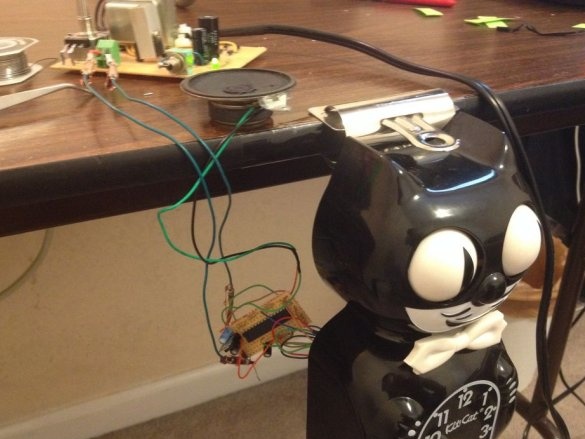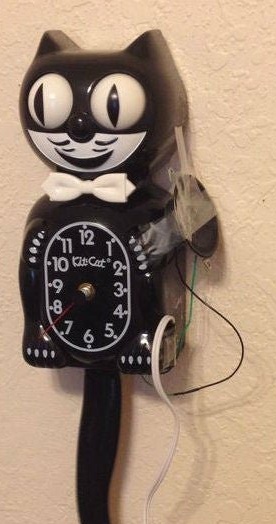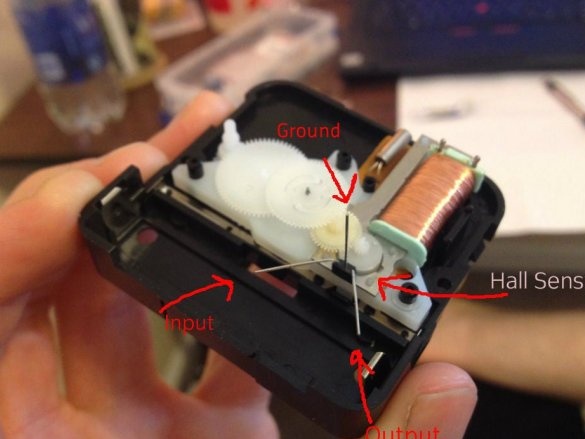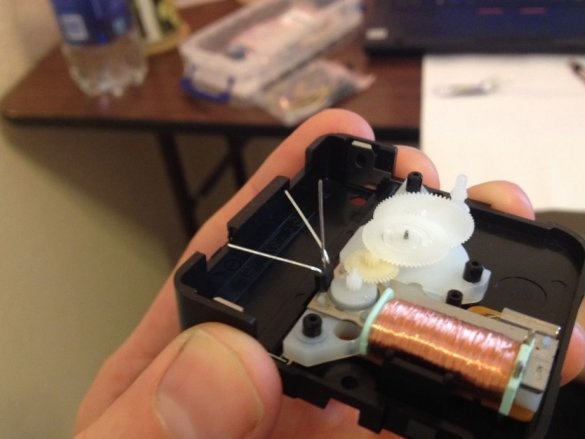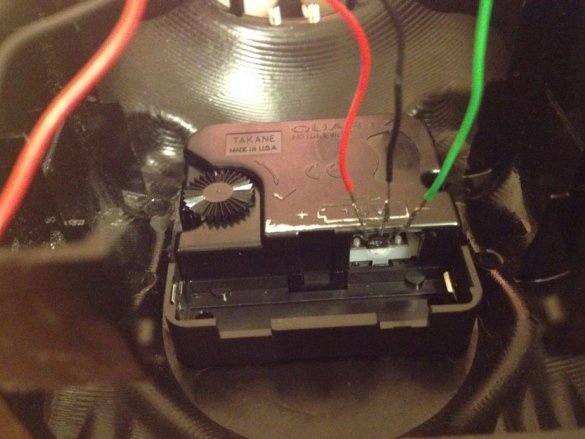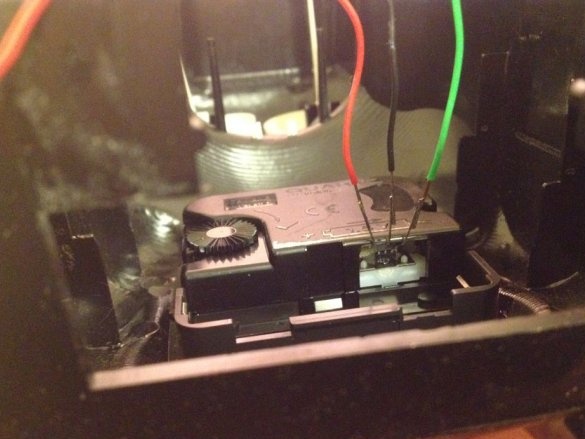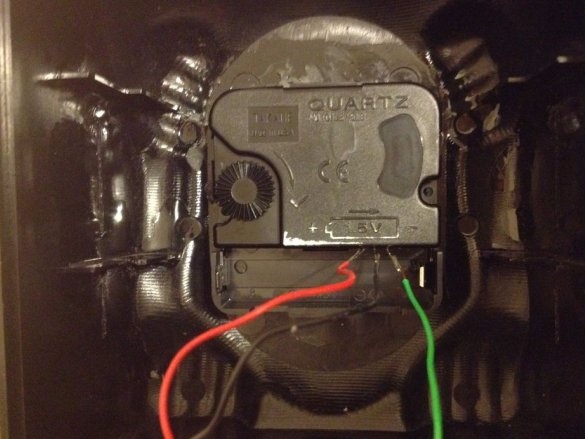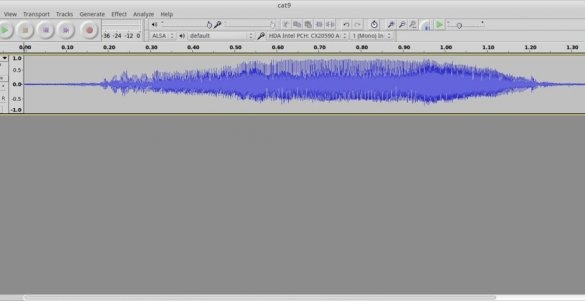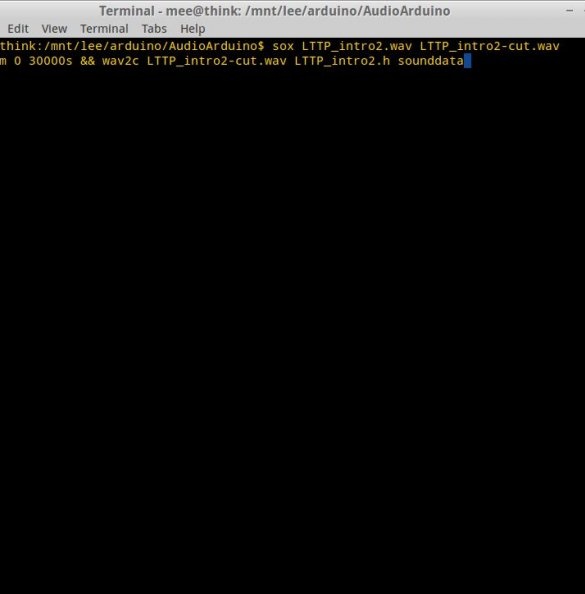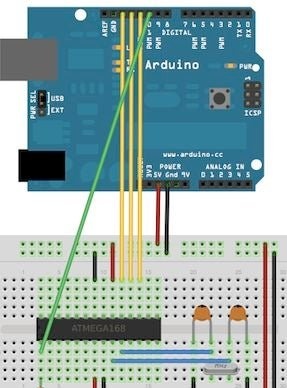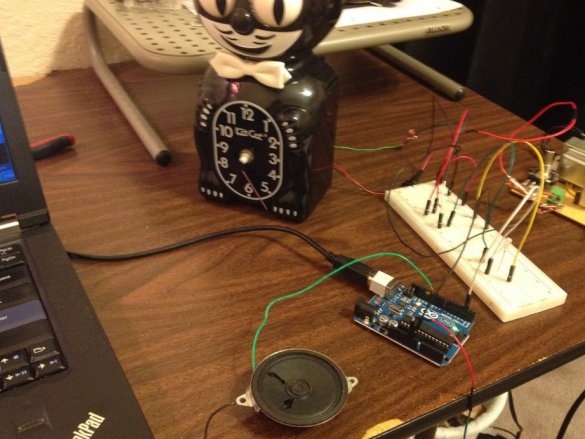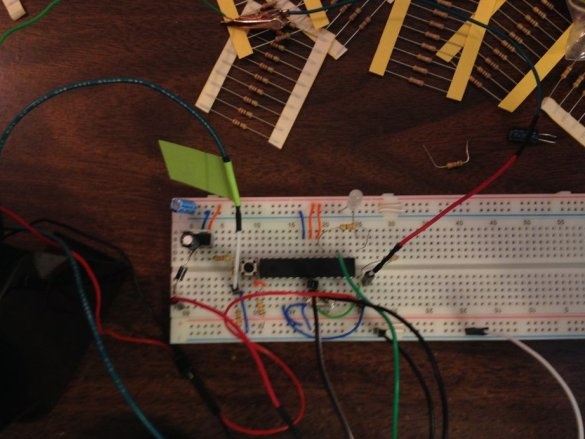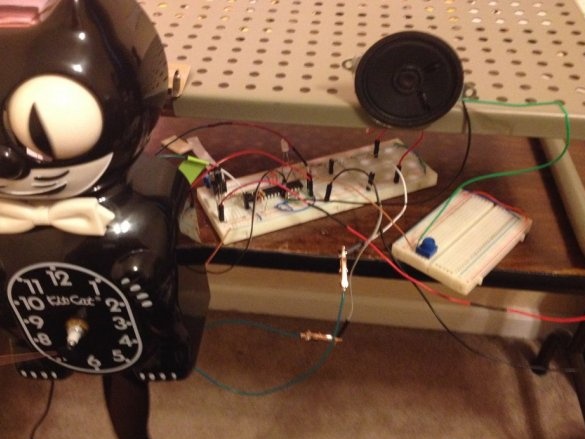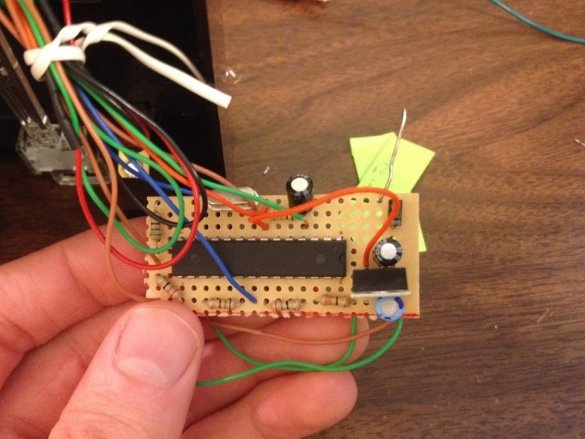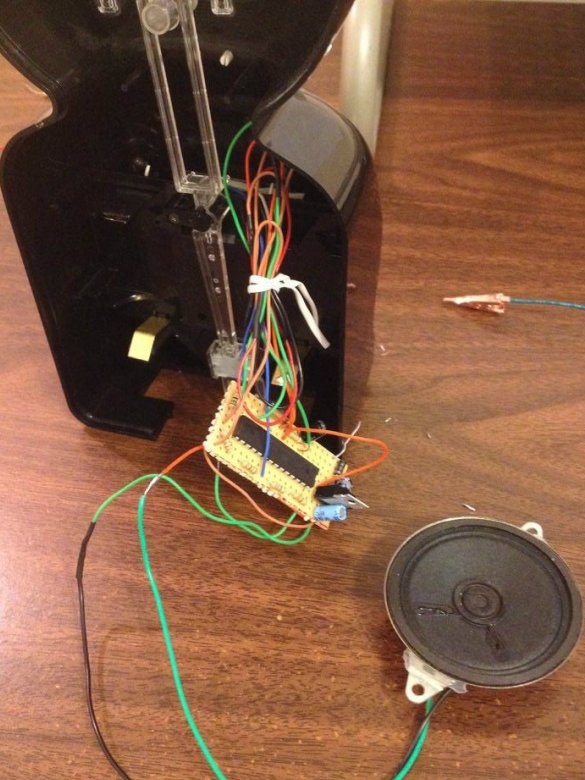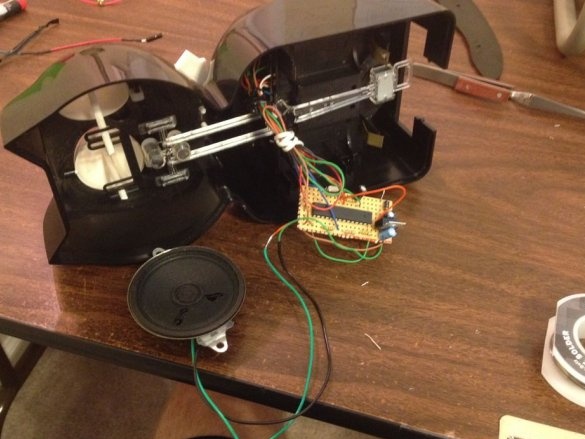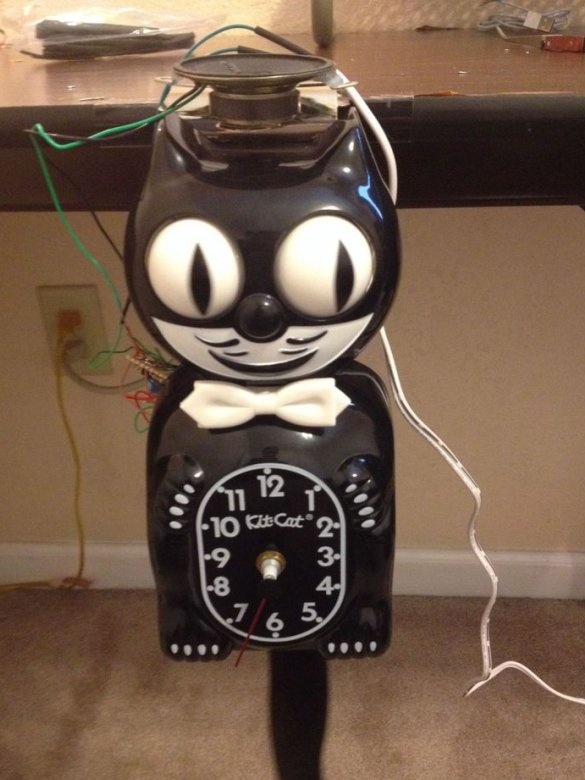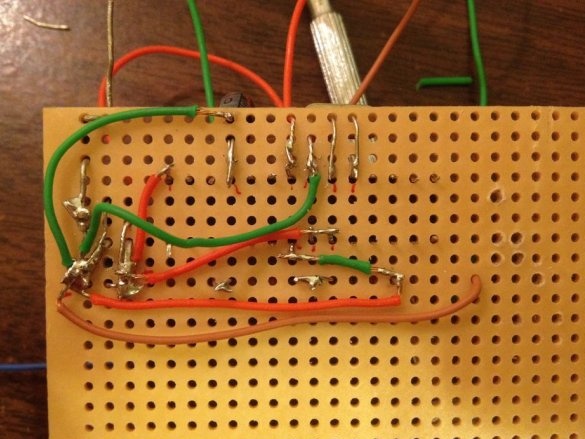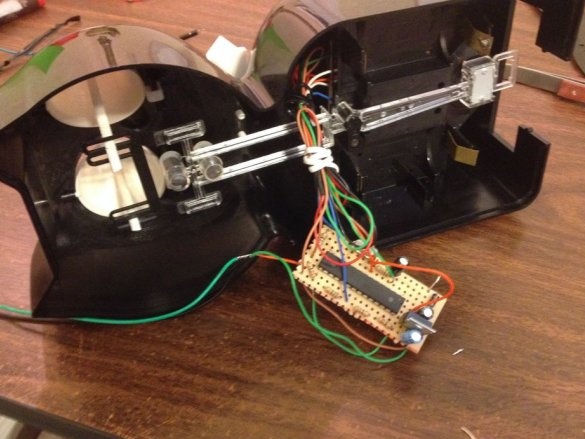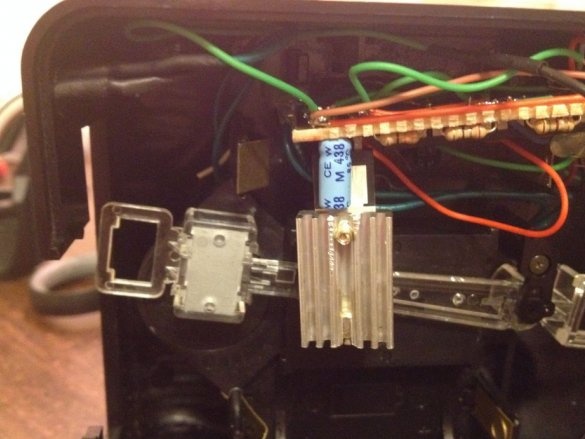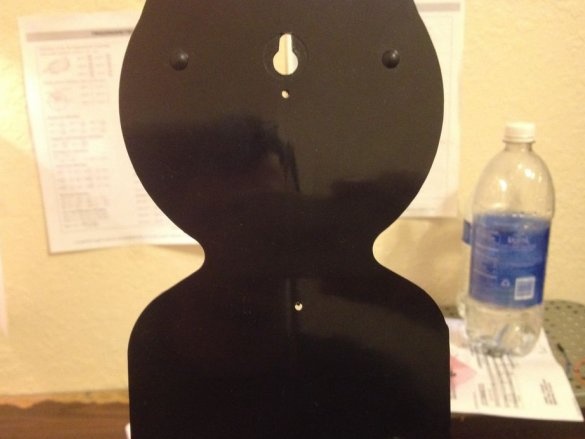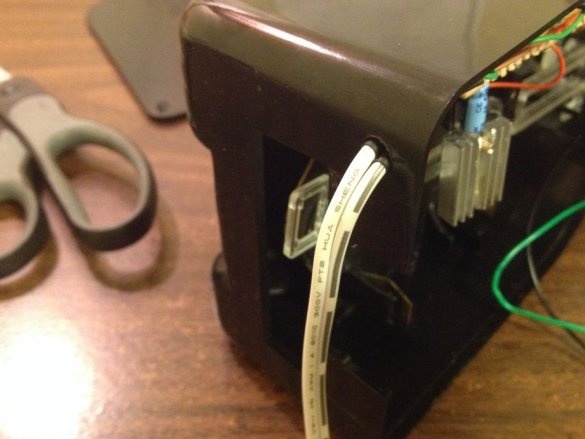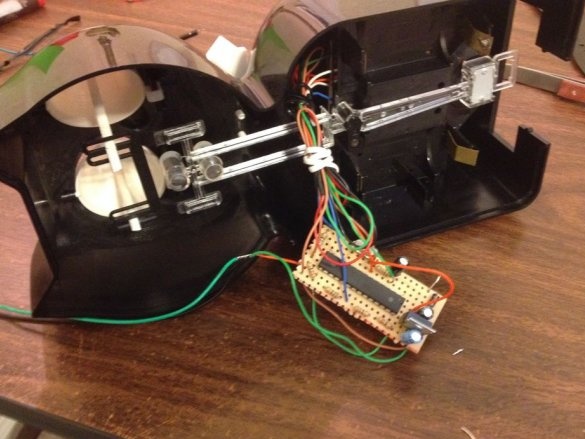If you have a clock in the form of a cat, using the microcontroller you can add another function to them - to make meow every hour. And how - says the author of Instructables under the nickname prazors.
From the translator. Actually, it’s more correct to purr. Cats meow when they ask for something, and purr when they are happy with something.
The master installs a Hall sensor in the watch, placing it so that it responds to the magnetic field of the electromagnet. Replace the cover without distortions, otherwise the gear shafts may bend without falling into the recesses in the cover.
The master solders the conductors to the conclusions of the Hall sensor.
The wizard converts the file with the sound “meow” to the following format: WAV, 8 bit, 8 kHz, mono, unsigned. Converts a file to a character sequence accepted in C, this utility. Then takes as a basis this a sketch that remodels, adding the meow sound and a piece of the program that turns on that sound every hour. Spreads the result here.
Cutting out only a fragment with the sound “meow” from the file, knowing its location, you can do this by changing the numbers on the command line that indicate the beginning and end of the fragment in milliseconds:
sox file.wav file-cut.wav trim 0 10000sThe syntax for the wav2c utility is as follows:
wav2c file-cut.wav file.h sounddataThe result of her work is the header file.
The wizard collects everything on a breadboard such as this and this schemes. First connects outside Arduino, then flashes the ATmega328P microcontroller with an Arduino bootloader and a sketch using another Arduino.
After making sure that everything works, the wizard transfers the circuit from the breadboard to perfboard.
And neatly places everything in the watch case:
Heat sink on the stabilizer is required. Setting up the design comes down to powering up at the moment when the clock shows 0 minutes. Then the sound "meow" will be heard at the beginning of the hour.

